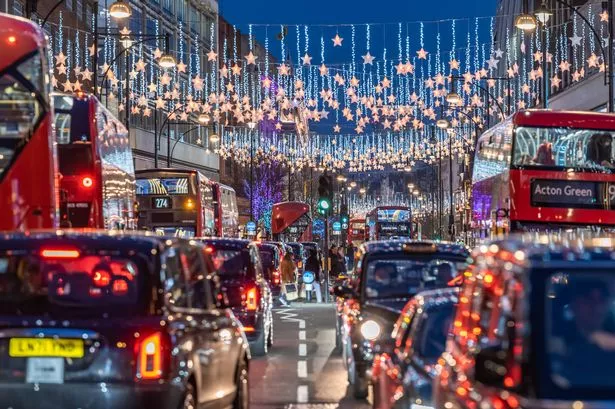Business
London Congestion Charge Changes: New Fees and Discounts in 2026

Major changes to London’s Congestion Charge will take effect on January 2, 2026, significantly impacting both electric and non-electric vehicles. The standard charge for non-electric vehicles will rise from £15 to £18, marking the first increase since 2020. Furthermore, electric vehicles (EVs), which previously benefited from the Cleaner Vehicle Discount, will no longer be exempt from the Congestion Charge.
The new structure is part of a broader initiative by Transport for London (TfL) aimed at reducing traffic congestion in the city centre. From January, drivers of electric vans and lorries will receive a 50% discount on the charge, while electric car drivers will face a 25% discount. This means that electric cars will incur a fee of £13.50 to enter the congestion zone, and owners of electric vans will pay £9. By March 2030, these discounts will decrease further to 25% for electric vans and lorries and 12.5% for electric cars.
Impact on Residents and Incentives for Sustainable Transport
Residents living within the Congestion Charge zone can expect reductions of up to 90% on their charges. However, new residents moving into the zone after March 1, 2027, will not qualify for any discounts unless they drive an electric vehicle. To support low-income and disabled Londoners, discounts of up to 100% will remain available.
London’s Mayor, Sadiq Khan, emphasized the importance of these changes in maintaining the city’s mobility and economic vitality. He stated, “Keeping London moving by reducing congestion is vital for our city and for our economy. While the congestion charge has been a huge success since its introduction, we must ensure it stays fit for purpose.” Khan noted that without these adjustments, approximately 2,200 additional vehicles would enter the congestion zone on an average weekday.
Official Responses and Future Goals
In a recent statement, Christina Calderato, TfL’s Director of Strategy, highlighted the significance of managing traffic effectively. She remarked, “If we want to ensure that London remains a thriving city for everyone to enjoy, then it’s vital that traffic and congestion is kept under control.” The changes to the Congestion Charge are seen as a crucial step towards a more sustainable and cleaner city.
Izzy Romilly, Sustainable Transport Manager at climate charity Possible, expressed support for the new measures. She remarked, “Tying the Congestion Charge to public transport fares is welcome. We need to cut traffic and invest in accessible and affordable public transport.” Romilly’s comments underline the broader vision of reducing air pollution while enhancing safety for all Londoners.
As London continues to adapt its transport policies, these changes reflect a commitment to sustainability and improved urban living. The updated Congestion Charge structure aims not only to alleviate traffic but also to encourage the transition to cleaner vehicles, contributing to a greener future for the city.
-

 Entertainment3 months ago
Entertainment3 months agoAnn Ming Reflects on ITV’s ‘I Fought the Law’ Drama
-

 Entertainment4 months ago
Entertainment4 months agoKate Garraway Sells £2 Million Home Amid Financial Struggles
-

 Health3 months ago
Health3 months agoKatie Price Faces New Health Concerns After Cancer Symptoms Resurface
-

 Entertainment3 months ago
Entertainment3 months agoCoronation Street’s Carl Webster Faces Trouble with New Affairs
-

 Entertainment3 months ago
Entertainment3 months agoWhere is Tinder Swindler Simon Leviev? Latest Updates Revealed
-

 Entertainment4 months ago
Entertainment4 months agoMarkiplier Addresses AI Controversy During Livestream Response
-

 Science1 month ago
Science1 month agoBrian Cox Addresses Claims of Alien Probe in 3I/ATLAS Discovery
-

 Health4 months ago
Health4 months agoCarol Vorderman Reflects on Health Scare and Family Support
-

 Entertainment4 months ago
Entertainment4 months agoKim Cattrall Posts Cryptic Message After HBO’s Sequel Cancellation
-

 World2 weeks ago
World2 weeks agoBailey Announces Heartbreaking Split from Rebecca After Reunion
-

 Entertainment3 months ago
Entertainment3 months agoOlivia Attwood Opens Up About Fallout with Former Best Friend
-

 Entertainment2 weeks ago
Entertainment2 weeks agoCoronation Street Fans React as Todd Faces Heartbreaking Choice





















